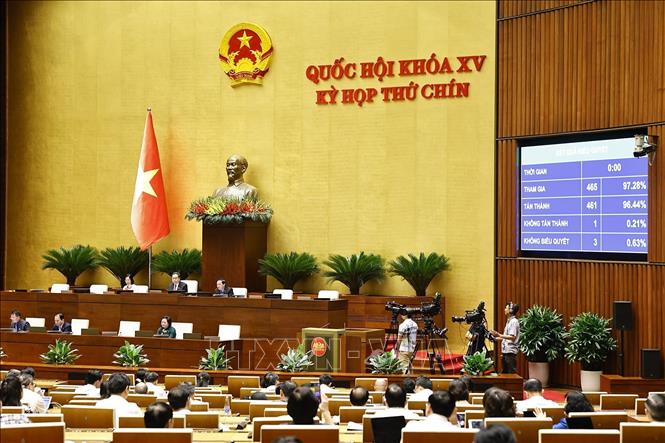 |
| The National Assembly passed a Resolution on the arrangement of provincial-level administrative units in 2025. Photo: Doan Tan/VNA |
From the effective date of this Resolution, the country has 34 provincial-level administrative units, including 28 provinces and 6 cities; of which 19 provinces and 4 cities were formed after the arrangement stipulated in this Resolution and 11 provinces and cities that did not implement the arrangement are: Cao Bang, Dien Bien, Ha Tinh, Lai Chau, Lang Son, Nghe An, Quang Ninh, Thanh Hoa, Son La and Hanoi city, Hue city.
Competent authorities shall urgently carry out necessary preparations to ensure that local governments in provinces and cities formed after the reorganization officially operate from July 1, 2025.
Local governments in provinces and cities previously arranged shall continue to operate until local governments in provinces and cities formed after the arrangement officially operate.
The National Assembly requests the Government, People's Councils, People's Committees of provinces and cities and relevant agencies and organizations to be responsible for organizing the implementation of this resolution; arranging and perfecting the organizational apparatus of local agencies and organizations; supporting and promptly resolving difficulties and problems of cadres, civil servants, public employees and workers affected by the implementation of the arrangement; ensuring social security, legitimate and legal rights and interests of people and businesses and the requirements of socio -economic development, national defense and security in the area.
The Government is responsible for organizing the accurate determination of natural areas and boundaries on administrative maps and in the field. In case after reviewing and comparing in the field, the data on the natural area of an administrative unit is different from the data recorded in this resolution, the Government shall update, adjust and publicly announce this information in an appropriate form without having to report back to the National Assembly.
In addition, the Government, ministries and central branches are responsible for guiding and promptly handling issues arising in the process of arranging provincial-level administrative units and perfecting the organization of local government apparatus at all levels to implement the two-level local government model.
It is expected that on June 30, all provinces will simultaneously announce the new administrative boundaries of the province, communes and the new leadership apparatus of both the Party and the government. After merging provinces, rearranging commune levels, and ending district-level activities, the local government apparatus will operate under a 2-level model (province, commune); it is expected to reduce 250,000 people, including: 130,000 cadres, civil servants, public employees and 120,000 part-time workers at the commune level; saving more than 190,000 billion VND in the period of 2026 - 2030.
52 provinces and cities are being reorganized into 23 new provincial-level administrative units named: Tuyen Quang, Lao Cai, Thai Nguyen, Phu Tho, Bac Ninh, Hung Yen, Hai Phong, Ninh Binh, Quang Tri, Da Nang, Quang Ngai, Gia Lai, Khanh Hoa, Lam Dong, Dak Lak, Ho Chi Minh City, Dong Nai, Tay Ninh, Can Tho, Vinh Long, Dong Thap, Ca Mau, An Giang.
 |
| The National Assembly delegation of Ha Tinh province voted to approve the National Assembly's Resolution on the arrangement of provincial-level administrative units in 2025. Photo: Doan Tan/VNA |
The review report of the Committee on Law and Justice and all opinions of National Assembly deputies agreed with the necessity and plans for the arrangement of provincial-level administrative units; at the same time, highly appreciated the Government and localities for seriously and promptly implementing the procedures for developing the Project, ensuring compliance with the Party's policies and legal regulations.
There are opinions suggesting that the Resolution take effect from the date of approval by the National Assembly to create a legal basis for localities to carry out the handover work, prepare necessary conditions, and ensure that local authorities in administrative units formed after the rearrangement can officially start operating from July 1, 2025.
In response to the above comments, the Government revised Article 2 of the draft Resolution in the direction that the Resolution on the arrangement of provincial-level administrative units in 2025 takes effect from the date of approval; competent agencies promptly carry out necessary preparations to ensure that local authorities in provincial-level administrative units formed after the arrangement officially operate from July 1, 2025; local authorities in provincial-level administrative units before the arrangement continue to operate until local authorities in provincial-level administrative units formed after the arrangement officially operate.
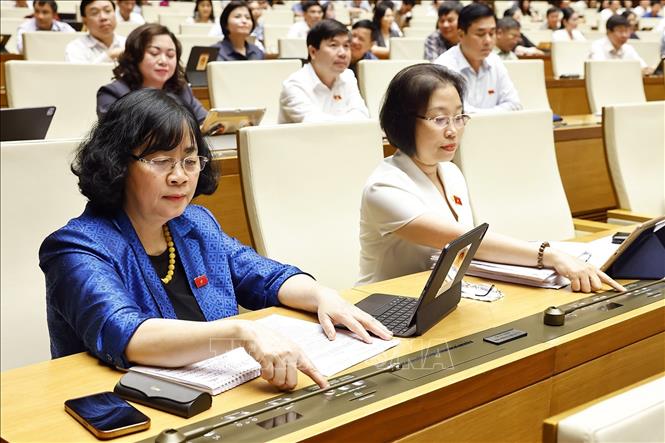 |
| The Hanoi National Assembly delegation voted to approve the National Assembly's Resolution on the arrangement of provincial-level administrative units in 2025. Photo: Doan Tan/VNA |
Regarding the arrangement and consolidation of the organizational structure and the assignment of cadres, civil servants, public employees, and workers in administrative units after the arrangement: There are opinions suggesting that the Government have a plan and roadmap for the arrangement and assignment of cadres, civil servants, public employees, and workers in administrative units after the arrangement; pay attention to resolving the regime and policies for redundant staff.
Regarding this content, immediately after the National Assembly passes the Resolution on the arrangement of provincial-level administrative units, the Government will continue to direct localities to issue detailed programs and plans to organize implementation, including promptly completing the arrangement of cadres, civil servants, public employees, and workers; clearly assigning people, tasks, and responsibilities; arranging personnel in accordance with job position requirements, with sufficient capacity to receive new tasks and powers to implement immediately after the new provincial and commune-level local governments come into operation; promptly implementing regimes and policies for cadres, civil servants, public employees, and workers of agencies and organizations under their management to ensure the correct subjects and rights and interests of cadres, civil servants, public employees, and workers affected by the arrangement of administrative units...
Source: https://huengaynay.vn/chinh-tri-xa-hoi/quoc-hoi-thong-qua-nghi-quyet-ve-viec-sap-xep-don-vi-hanh-chinh-cap-tinh-nam-2025-154598.html


























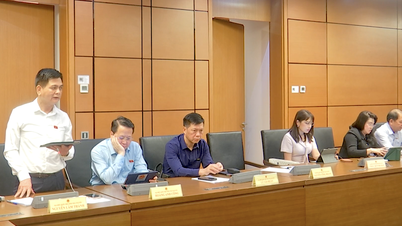



![[Photo] Overcoming the heat, practicing to prepare for the parade](https://vphoto.vietnam.vn/thumb/1200x675/vietnam/resource/IMAGE/2025/6/21/b93392e8da8243b8a32040d19590e048)


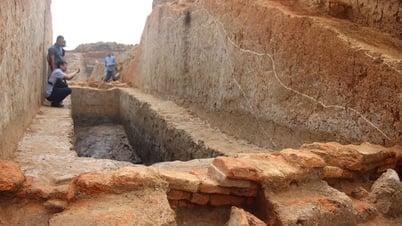






















![[Maritime News] Wan Hai Lines invests $150 million to buy 48,000 containers](https://vphoto.vietnam.vn/thumb/402x226/vietnam/resource/IMAGE/2025/6/20/c945a62aff624b4bb5c25e67e9bcc1cb)



















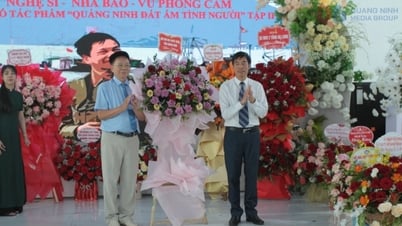


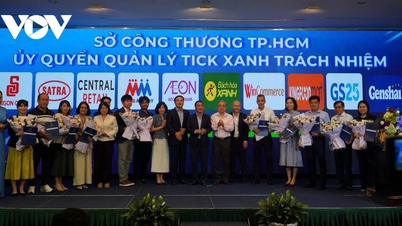

















Comment (0)